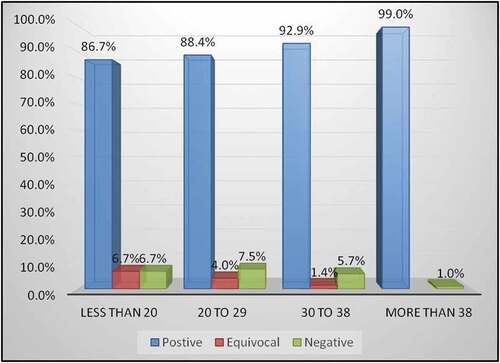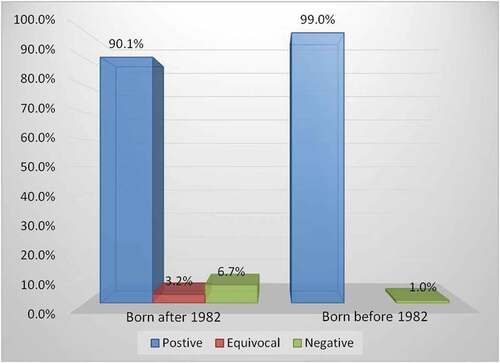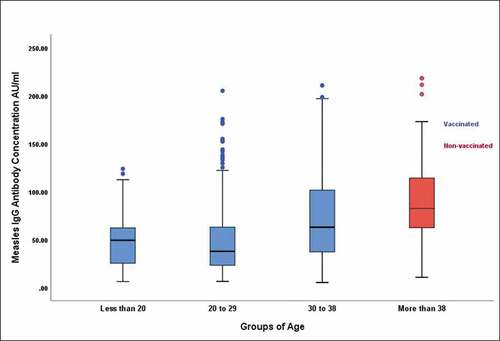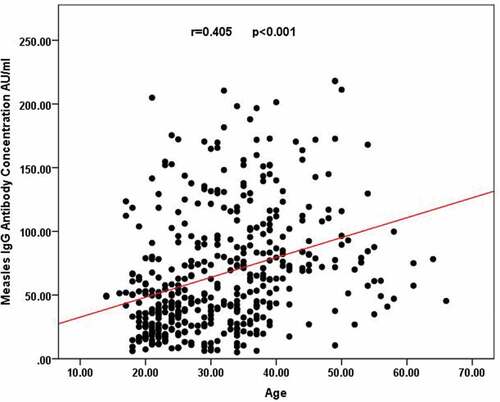Figures & data
Table 1. Demographic characteristics of study participants (n = 443)
Table 2. Distribution of measles serological status by gender (n = 443)
Table 3. Age group distribution of serological status for measles IgG antibodies (N = 443)
Figure 1. Prevalence of anti-measles IgG seropositivity by age group. In the absence of access to vaccination records, the individuals were stratified into vaccinated and un-vaccinated groups depending on their age and probable vaccination history. A significant directional relationship was observed between age groups and seropositivity for anti-measles IgG antibody (p = .019). Age group frequencies: > 38 (n = 100), 30–38 (n = 140), 20–29 (n = 173), and < 20 (n = 30)

Figure 2. Prevalence of anti-measles IgG seropositivity by vaccination history. A significant relationship was detected between vaccination status and seropositivity for anti-measles IgG antibody (p = .010 by Fisher’s exact). Born before 1982 (n = 100), Born after 1982 (n = 343)

Figure 3. Concentrations of anti-measles IgG antibodies for each age group among vaccinated and non-vaccinated individuals. The median for each age group is indicated by the horizontal line inside the box, which represents the 50% percentile. The 25% and 75% percentiles are indicated by the lower and the upper ends of each box, respectively, and the distance between the two percentiles represents the interquartile range (IQR), which is a measure of the dispersion of values. The ends of the whiskers represent 1.5 times the IQR. Extreme values that occur outside the box and whiskers are considered to be outliers and are indicated by small dots. Age group frequencies: > 38 (n = 100), 30–38 (n = 140), 20–29 (n = 173), and < 20 (n = 30)

Figure 4. Scatterplot showing the correlation between age and the concentration of anti-measles IgG antibodies, as determined by Spearman’s rank correlation

Table 4. Multivariate logistic regression: effect of the age grouping and sex on measles immunization status
